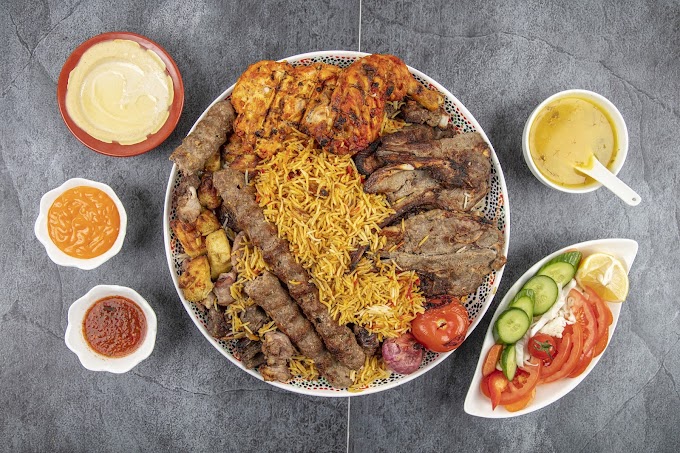 |
| Photo by dhiraj jain: Pexels There is nothing quite like a warm, comforting dish when the temperature drops and winter begins to set in. Enter Nihari, a rich, flavorful stew that has been the heart of Pakistani and North Indian kitchens for centuries. Nihari is loved for its deep, savory taste and tender meat. It's more than a meal; it's a tradition that can bring warmth during cold days. But what makes this dish so comforting, and why is it cherished globally? What is Nihari? Nihari is a type of stew that contains slow-cooked meat, primarily beef or mutton, over a blend of spices and herbs. The word "Nihari" originates from the Arabic word Nahar, which translates to "day," because of its original cooking method. It was historically cooked overnight to serve as a breakfast food that provided energy for the day ahead. Its unique spice blend and the tenderness of the slow-cooked meat make it such a comfort food, especially through the colder months. The heart of Nihari : Rich, flavorful, slow-cooked The secret to Nihari's irresistible taste is in its carefully balanced spice mix. The dish combines warming spices like cumin, coriander, ginger, garam masala, and the star of the show — Nihari masala. This special spice mix gives Nihari its signature flavor profile, making it the perfect dish to warm up on a cold day. Another thing that makes Nihari unique is the slow-cooking process. The meat cooks for hours so that it absorbs all the flavors and becomes fall-apart tender. This slow-cooked process not only makes the meat tender but also gives the dish an in-depth flavor, so that with each spoonful, the taste buds are pleased. It becomes a bowl of spicy, rich broth with silky, smooth texture, just great to go with soft, fluffy naan or steamed rice. |
While Nihari originated in South Asia, its popularity has spread far beyond the region. Its rich flavors and comforting nature have made it a favorite for winter across the globe. Whether you’re in the heart of the Middle East, Europe, or North America, Nihari has become a dish that connects cultures, offering comfort during cold months.
Nihari, though delicious, is not only about excellent taste but also is rich in nutrients that can keep a person warm and energetic the whole day. The slow-cooked meat provides an excellent source of protein, while spices possess many health benefits.
For instance, ginger and garlic are known for their anti-inflammatory properties and digestive benefits, while spices like cumin and coriander can even help with digestion and strengthen immunity.
For those looking to try Nihari at home, here's a simple Nihari recipe that will bring the magic of this dish to your kitchen.
- 1 kg beef or mutton (cut into chunks)
- 2 onions (finely sliced)
- 2 tomatoes (chopped)
- 2 tbsp ginger-garlic paste
- 1/4 cup Nihari masala (available at South Asian grocery stores or online)
- 1 tsp ground cumin
- 1 tsp ground coriander
- 1/2 tsp turmeric powder
- 1 tbsp garam masala
- 4 cups beef or mutton broth
- Salt, to taste
- 2 tablespoons ghee or oil
- Fresh coriander leaves, for garnish
- Heat ghee in a large pot; fry the sliced onions and turn them golden brown.
- Remove half of the sliced onions in pan from fry-queue and set aside for garnish.
- Add ginger garlic paste and fry until fragrance comes.
- Add meat pieces to the pot and allow browning on all the sides. Add tomatoes as well and let them tenderize.
- Add the following spices: Nihari masala, cumin powder, coriander, turmeric, and garam masala. Mix well.
- Pour in the broth and bring to the boil. Reduce the heat to low, cover and simmer for 2-3 hours, or until the meat is tender and the flavors are well combined.
- Serve hot with naan or rice, garnished with fresh coriander leaves.
Nihari: A Winter Tradition to Admire
Whether you are snuggled up in the warmth of your home during a middle-of-winter snow or seeking a global comfort food to enjoy in any season, Nihari does deliver in warmth and flavor like no other dish. It's more than food; it's a celebration of culture, heritage, and the power of spices to transform a simple meal into something extraordinary.
Nihari is one dish that continues to evolve as it incorporates flavors and traditions from across the globe. Still, its roots stay firmly planted in the history of South Asia. So, gather your loved ones around a steaming pot of Nihari this winter; it's the perfect dish to share, connect over, and most importantly, savor — offering the ultimate winter comfort food experience for chilly days.
Add Nihari to your winter meal rotation, and indulge in a dish that not only satisfies your taste buds but connects you to a global tradition cherished far and wide. Don't let the cold weather stop you — embrace the warmth and richness of Nihari today!
Thank you for visiting my Blog!
Follow my blog with Bloglovin




.jpg)

